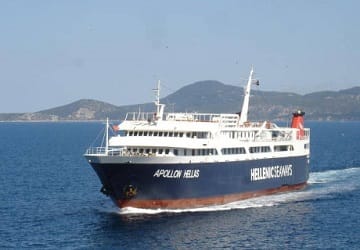
-
Recent Searches
Recent Searches
- Travel Alerts
- My Account
- Customer Service
-
United Kingdom
Syros to Kavala Ferry
The Syros Kavala ferry route connects Cyclades Islands with Greece. Currently there is just the 1 ferry company operating this ferry service, Hellenic Seaways. The crossing operates up to 2 times each week with sailing durations from around 19 hours.
Syros Kavala sailing durations and frequency may vary from season to season so we’d advise doing a live check to get the most up to date information.
Average Syros Kavala Prices
Prices shown represent the average one way price paid by our customers. The most common booking on the Syros Kavala route is a car and 2 passengers.
Syros Guide
The Greek island of Syros is one of the Cyclades group of islands and lies in the Aegean Sea, around 145 km to the south east of Athens, the Greek capital. The island's history dates back to around the 3rd millennium BC, to the reign of Halandriani and Kastri. Artefacts excavated on the island show that there must have been a metalwork laboratory on the island which it is thought had a commercial relationship with Asia Minor. During the 6th century BC, the island was occupied by the Samians, when many of the island's inhabitants moved to the island. The important physician and philosopher, Pherecydis was born on the island during this period and later went to Samos and became Pythagoras' teacher.
In addition to the island's beauty, Syros has a thriving cultural scene and a love of the arts. Tourists should take the time to visit the island's museums and galleries in addition to strolling through pretty village streets or lazing on the beach.
From the island's port there are ferry services to Rafina and Piraeus by both conventional or high speed ferry. Syros is also connected to all of the Cyclades Islands, the Dodecanese Islands, Crete, Thessaloniki and Skiathos.
Kavala Guide
The Greek city of Kavala is the capital and main port of the Kavala region and is built on the slopes of Mount Symvolo, and is regarded as one of the most picturesque cities in Greece. By analysing the archaeological artefacts found, the city is able to trace its history back to Prehistoric times. The city's original centre was restricted to the Panayia district which has been inhabited since the 7th century BC. At the beginning of the 16th century the city expanded and managed to maintain its new borders until 1870 although the city as can be seen today only really began to form after 1928.
The cities fortunes were in large part a result of its important location, its port and to its natural defences on the peninsular, on which the old city was built. Wandering around the city visitors will be struck by its neoclassical mansions and large tobacco warehouses which are a physical symbol of the city's recent past. In the “Mecca of tobacco” as Kavala was named in the past, thousands of tobacco workers earned their living.
From the city's port ferries operate to Agios Efstratios, Limnos, Lavrio, Kirikos, Chios, Karlovassi, Psara, Vathi and Mytilene.


